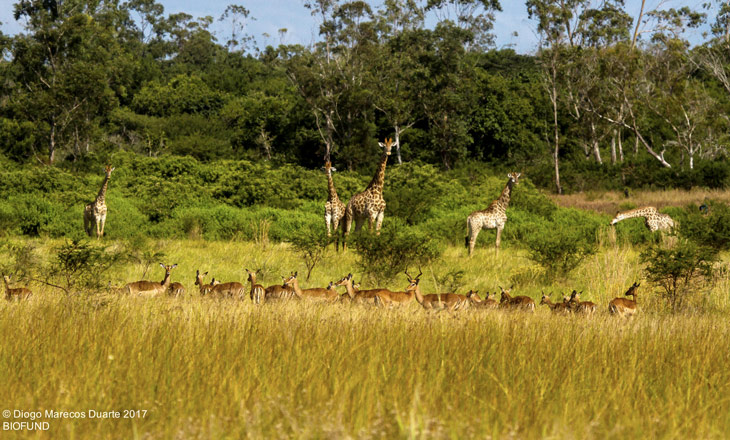At its meeting on 21 September 2017, the Board of Directors of BIOFUND approved further financing to be granted to conservation areas over the period 2018-2020, under the 3rd Cycle of Project Bee.
Published at 02/10/2017
BIOFUND grants 36.000.000 Meticals to three Conservation Areas

Out of the 9 proposals received, a jury appointed by BIOFUND selected three of the bidders for financing. Amounts of between 9,500,000 and 15,000,000 MT are being attributed for a period of 3 years. The bidders selected are:
- Zinave National Park (terrestrial conservation area, Inhambane province);
- Bazaruto National Park (terrestrial conservation area, Inhambane province);
- Maputo Special Reserve (terrestrial and marine conservation area, Maputo province).
It should be mentioned that this financing joins those which BIOFUND has already been undertaking since 2016, under the 1st and 2nd cycles of Project Bee, benefitting the following conservation areas: the Ponta do Ouro Partial Marine Reserve (Maputo province), Limpopo National Park (Gaza province), Cape S. Sebastião Total Protection Zone (Inhambane province), Gilé National Reserve (Zambézia province), Quirimbas National Park (Cabo Delgado province) under the same financing project.
Project Bee is based on a fund that has been formed 20% by BIOFUND itself, and 80% by the French Development Agency (AFD), under the Fourth Contract on Debt Reduction and Development (C2D) signed between the governments of the Republic of Mozambique and the French Republic on 20 July 2015 for the “Project to support the conservation areas and the preservation of elephants in Mozambique” (APEM).
The BIOFUND contribution results from the income from its investment fund, formed out of contributions from German Cooperation through KfW (USD 17M), from the GEF through the World Bank (USD 3.2 M) and from Conservation International/GCF (USD 1M).
In addition to Project Bee, regarded as the standard modality for its financing, BIOFUND is active in mobilising funds for other types of financial support for conservation, and currently channels an average of 1 million USD per year, to the National System of Conservation Areas.

